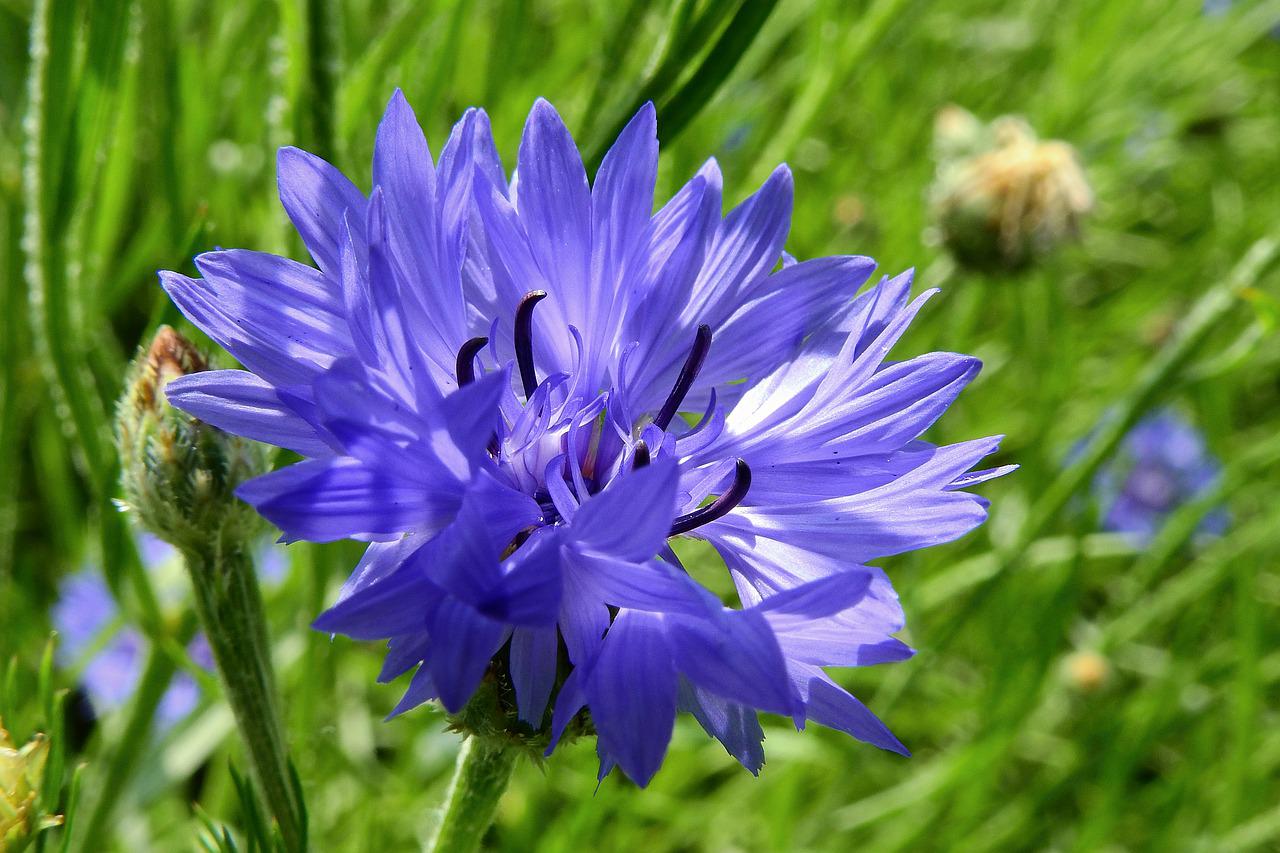
Cornflower is one of the plants which, due to its numerous healing properties, have been used in folk medicine for hundreds of years. The common cornflower is also often used as an ingredient in cosmetics.
Cornflower (Centaurea cyanus L.) belongs to the herbaceous plants of the Asteraceae family. It grows in Europe and Western Siberia. It has bright blue flowers and long stems, which can reach up to 80 cm in height. This inconspicuous plant is characterized by a number of valuable medicinal and cosmetic properties.
Cornflower owes its valuable properties to the presence of flavonoids, which are strong antioxidants, diuretics, anti-inflammatory, sealing blood vessels and spasmolytic. In cornflower we can also find organic acids with antibacterial, cholagogic and stimulating the production of gastric juice and saliva. Another valuable substance are plant tannins, which are characterized by astringent, antioxidant, anti-inflammatory and anti-hemorrhagic properties. Cornflower also contains manganese, a component necessary for the proper functioning of the nervous system.
Cornflower is used to treat inflammation of the urinary tract, and as an auxiliary for kidney disease and kidney stones. Due to its mild cholagogic effect, the plant can be used as an adjunct in liver and gallbladder diseases. Moreover it helps to regulate metabolism.
Blavatella works well not only when used internally, but also externally for skin problems. It deals with acne, seborrheic dermatitis, dandruff and fungal infections. It aids in healing wounds and ulcers, as well as treating inflammation of the mucous membranes of the mouth and throat by reducing inflammation and fighting bacteria. On the one hand, cornflower has antibacterial and anti-inflammatory effects on acne and oily skin, and on the other hand, it shrinks and strengthens blood vessels of vascular skin.
Cornflowers can be picked on their own from May to August and dried only the petals, without the calyx. You can find ready dried flowers in pharmacies and herbal stores. Some find it most convenient to drink cornflower tea in bags.
With the use of dried cornflower petals, many beauty and healing treatments can be carried out. A warm bath with fresh or dried petals can soothe irritated skin and stiff joints and muscles. A popular treatment for irritated conjunctivae is a warm compress. Cornflower will also soothe tired eyes, for example after long hours of working in front of a computer, and will support the treatment of conjunctivitis.
Cornflower is also worth making a tonic yourself, which will be suitable for rinsing couperose, oily and problematic complexions. To prepare an infusion for washing the skin, simply pour five tablespoons of dried cornflower petals into a glass of boiling water. Then brew the infusion for 15 minutes, strain it and cool it down. Use the tonic twice a day and store in the refrigerator for up to two weeks. Regular washing of skin with cornflower tonic will help to lighten discoloration, moisturize epidermis, strengthen blood vessels and reduce puffiness.
main photo: pixabay.com/Inactive account – ID 5892437